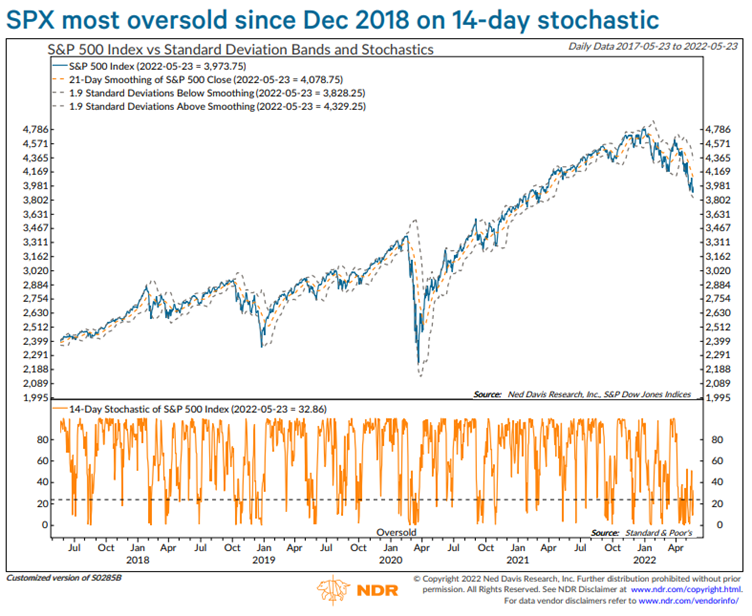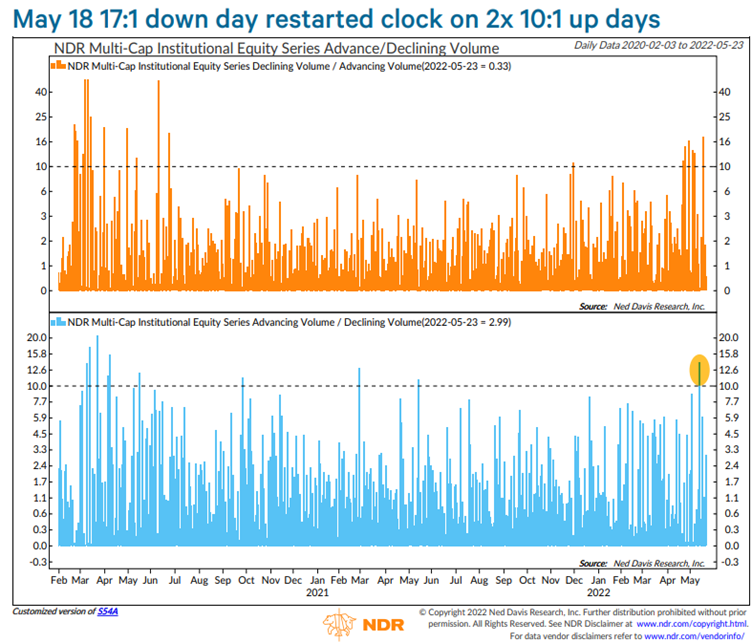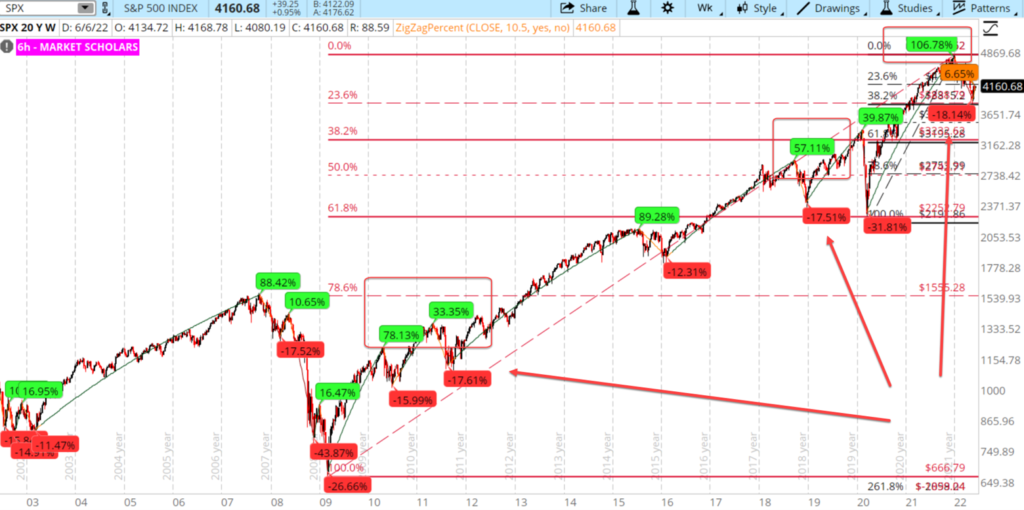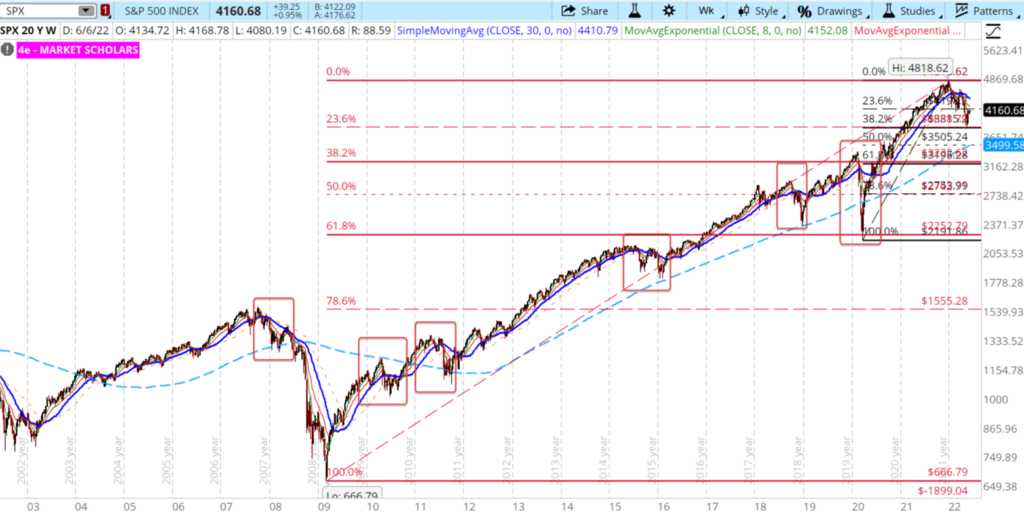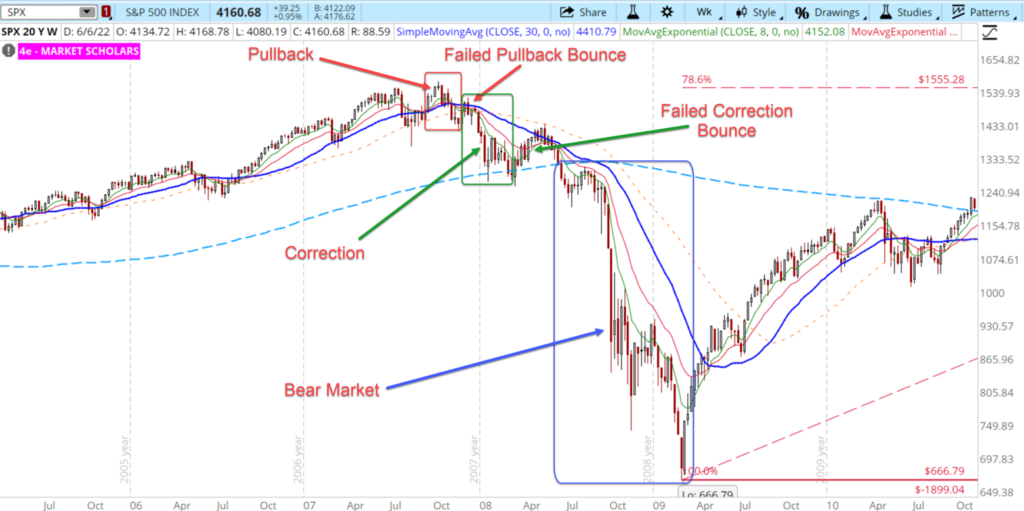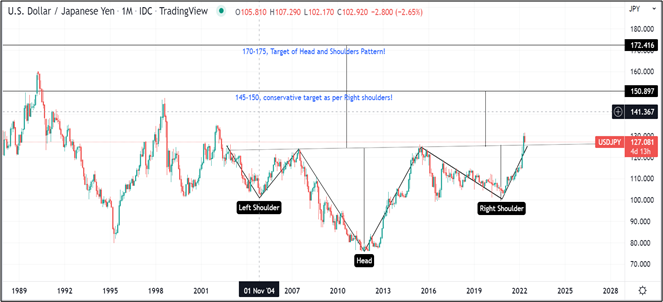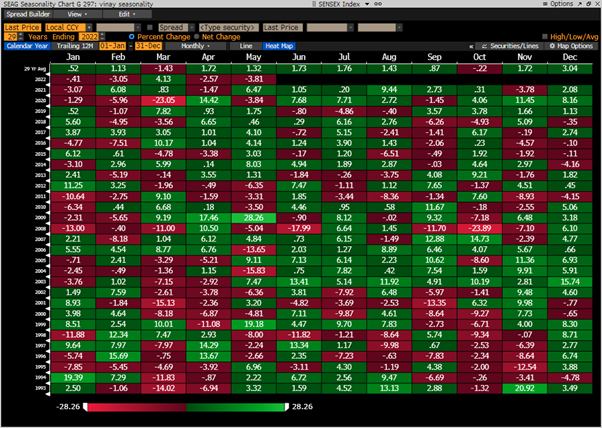Negative divergences, occurring in a variety of indicators, often warn of impending price consolidations / declines. There are different implications with short- term, intermediate- term or longer-term (more structural) divergences observed versus price action in an uptrending stock, commodity, index, etc.
A divergence occurs when price moves to a new reaction high but the indicator does not, rather failing at a lower high, creating a negative divergence to price, suggesting the momentum is waning.
Referencing here the MACD (moving average convergence divergence) indicator as an example, short-term (daily) divergences can indicate the potential for either a period of consolidation, or of a short-term pull back in an ongoing uptrend. A weekly divergence might suggest a more sustained consolidation / pullback, and even a reversal of trend, particularly if support is violated, offering an opportunity to lighten positions.
The monthly (more structural) divergences generally cover an extended period of time and should be taken more seriously for the potential of a more sustained decline; even an eventual end to an uptrend. These can offer a warning / opportunity to continue lightening / selling positions.
The event of a Sell signal in the MACD (the upper line crossing below the lower line), or a broken critical price support level, offer technical viability of the divergence. Monthly divergences need not always occur, but a monthly MACD Sell signal, even without a divergence, offers a more structural warning to sell.
We were watching the developing negative divergence in BITCOIN into Q1 of 2022, in all timeframes with a MACD divergence: The daily, the weekly price pattern (Fig. F-1) and also in the monthly.
Fig. F-1 Grayscale Bitcoin Trust (GBTC) (Top) & MACD (Bottom) (Weekly)

Source: Bloomberg and LY Advisors
The weekly price high in March 2021 was followed by an equal rally price high in November 2021. But the weekly MACD momentum (lower panel) was at a significantly lower high (see lower arrow), suggesting upward momentum was losing strength.
One can also note on the primary rally price high, the weekly MACD offered an initial Sell signal in April 2021 (as the upper line crossed below the lower line), worthy of acting defensively (lighten / sell positions) and from which price carried from 50 to 24, establishing an initial support level.
A weekly MACD Buy (lower line crossing up over the upper line), occurred in September 2021, carrying price toward the former high near 50, from which price declined again in February 2022 to the support established in July 2021 at
- But the MACD did not rally to its prior high (see declining arrow, lower panel), offering the negative momentum divergence, suggesting further risk might lie ahead.
The MACD itself also offered an early December 2021 Sell signal, suggesting one could lighten positions as price again retreated from 50 to the prior 24 support. (These weekly Sell signals offered participants 2 opportunities to capture rally profits.)
After a multi-week consolidation into March-April 2022, price gave up and broke the 24 support in mid-May 2022 (see horizontal red line). The MACD is still declining, suggesting the price depreciation may not be over, notwithstanding interim rallies. One ought to allow for evidence of stabilization at a low and the gradual reversal of the daily, weekly and eventually, monthly MACDs.
As a quick short-term 2022 reference, one can note even on the daily profile (Fig. F-2) that there is a divergence on the second MACD rally peak (see red arrow), which can offer a first alert to a possible similar development on the weekly and possibly eventually, the more structural monthly patterns.
Fig. F-2 Grayscale Bitcoin Trust (GBTC) (Top) & MACD (Bottom) (Daily)

Source: Bloomberg and LY Advisors
The monthly profile (Fig. F-3) depicts the equal price highs with a less obvious, but still diverging pattern in the momentum (see vertical and declining red arrows). Notice that on the second price high, the monthly MACD had not yet slipped to a Sell, but was beginning to flatten / roll over. The second price high was met with a slightly lower level in that flattening MACD period.
One can also see the falling histogram, as the MACD narrows (blue arrow), and the divergence progresses, until the December 31 2021 MACD Sell signal, at which point one should consider being fully defensive.
Fig. F-3 Grayscale Bitcoin Trust (GBTC) (Top) & MACD (Bottom) (Monthly)

Source: Bloomberg and LY Advisors
Price had yet to fall to the support at 24, and after doing so, lingered above 24 for several months, offering additional time, at a stable price, to lighten / sell before the May 2022 price breakdown.
The momentum is still declining, suggesting it is too soon to consider re-entry,
notwithstanding interim rallies which can carry into resistance, formerly support.
Fig. F-4 Grayscale Bitcoin Trust (GBTC) (Top) & Relative Strength to S&P 500 (Bottom) (Monthly)

Source: Bloomberg and LY Advisors
Interestingly, one can also note a similar warning in the weekly Relative Strength (RS) negative divergence (Fig. F-4), demonstrating evidence that multiple indicators can offer divergences; in this case the RS for BITCOIN was also suggesting a change of status, one of underperformance.







